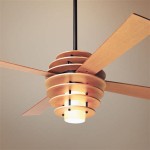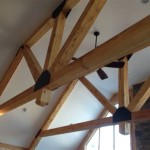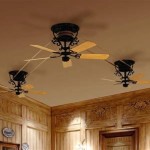Heating Vents in Ceiling: An Overview
Heating vents installed in the ceiling are a common feature in many residential and commercial buildings. These vents play a crucial role in distributing heated air throughout a space, contributing to overall comfort and climate control. Understanding the functionality, benefits, limitations, and considerations involved in using ceiling-mounted heating vents is essential for homeowners, building managers, and HVAC professionals.
The primary function of heating vents in the ceiling is to deliver warm air from the heating system to the occupied areas of a room or building. This warm air is typically generated by a furnace, heat pump, or other heating appliance. The ductwork, a network of insulated channels, carries the heated air from the heating unit to the individual vents located in the ceiling. These vents are strategically positioned to optimize air distribution and ensure consistent heating throughout the space.
The effectiveness of ceiling-mounted heating vents depends on various factors, including the size and layout of the room, the height of the ceiling, the type of heating system, and the design of the vent itself. A properly designed and installed system will provide even and efficient heating, minimizing cold spots and ensuring a comfortable environment. Conversely, a poorly designed system can lead to uneven heating, drafts, and increased energy consumption.
Advantages of Ceiling-Mounted Heating Vents
Ceiling-mounted heating vents offer several advantages over other types of vent locations, such as floor vents or wall vents. One key benefit is their ability to distribute warm air from above. Since warm air naturally rises, ceiling vents can take advantage of this principle to create a more uniform temperature distribution throughout the room. This is particularly beneficial in rooms with high ceilings, where floor vents may struggle to effectively heat the upper portions of the space.
Another advantage of ceiling vents is their aesthetic appeal. They can be less obtrusive than floor vents, which can sometimes interfere with furniture placement and create tripping hazards. Ceiling vents are typically flush with the ceiling surface, blending seamlessly into the overall design of the room. This can be particularly desirable in modern or minimalist interiors where a clean and uncluttered look is valued.
Furthermore, ceiling vents can offer improved air quality compared to floor vents. Floor vents are more susceptible to collecting dust, dirt, and other debris that can circulate through the air when the heating system is activated. Ceiling vents, being higher up, are less likely to accumulate these contaminants, resulting in cleaner and healthier indoor air.
From an installation perspective, ceiling vents can sometimes be easier to install in certain building types, especially those with accessible attic spaces or suspended ceilings. This can reduce installation costs and minimize disruption to the occupants of the building.
Disadvantages and Considerations
Despite their advantages, ceiling-mounted heating vents also have some potential drawbacks that should be considered. One primary concern is the potential for heat stratification. While warm air naturally rises, it can also accumulate at the ceiling level, leaving the lower portions of the room feeling cooler. This is especially true in rooms with high ceilings or poor insulation.
To mitigate heat stratification, proper vent placement and airflow management are essential. Vents should be positioned to direct warm air downwards and outwards, ensuring that it reaches the occupied areas of the room. The use of adjustable vents can also help to fine-tune the airflow and optimize temperature distribution. In some cases, ceiling fans can be used to circulate the air and prevent stratification.
Another consideration is the potential for drafts. If the vents are not properly sealed or if the airflow is not properly balanced, drafts can occur, creating uncomfortable cold spots. Proper insulation and sealing of the ductwork are crucial to minimize air leakage and prevent drafts. The use of deflectors or diffusers can also help to control the direction and velocity of the airflow, reducing the likelihood of drafts.
Accessibility for maintenance and repairs can also be a factor. Ceiling vents may be more difficult to access than floor or wall vents, especially in buildings with high ceilings or limited attic access. This can make it more challenging to clean the vents, inspect the ductwork, or perform necessary repairs. It is important to consider the ease of access when choosing the location and type of ceiling vent.
The initial cost of installing ceiling-mounted heating vents can also be higher than that of other vent types, particularly if extensive ductwork modifications are required. However, the long-term energy savings and improved comfort provided by a well-designed ceiling vent system can often offset the initial investment.
Types of Ceiling Heating Vents and Their Application
There are various types of ceiling heating vents available, each designed for specific applications and airflow characteristics. The most common types include:
*Register Vents:
These vents feature adjustable louvers that allow users to control the direction and volume of airflow. Register vents are versatile and can be used in a wide range of applications. *Diffuser Vents:
These vents are designed to distribute air evenly in all directions, creating a gentle and diffused airflow. Diffuser vents are particularly well-suited for large open spaces where uniform temperature distribution is desired. *Linear Diffusers:
Linear diffusers are long, narrow vents that provide a continuous stream of air along a wall or ceiling. These vents are often used in commercial buildings or modern residential designs. *Round Vents:
Round vents are a simple and aesthetically pleasing option that can be used in a variety of settings. They typically feature a fixed airflow pattern and are suitable for smaller spaces. *Adjustable Pattern Vents:
This type of vent allows for adjustment of both the air volume and the airflow pattern. They are suitable for areas where flexibility is required to meet changing heating needs.The selection of the appropriate type of ceiling vent depends on the specific requirements of the space, including the size of the room, the height of the ceiling, the desired airflow pattern, and the aesthetic preferences of the building owner. An HVAC professional can provide guidance on choosing the best type of vent for a particular application.
The material composition of ceiling vents also varies. Common materials include steel, aluminum, and plastic. Steel vents are durable and cost-effective, while aluminum vents are lightweight and corrosion-resistant. Plastic vents are often used in bathrooms or other areas where moisture is a concern.
In addition to the type of vent, the size of the vent is also an important consideration. The size of the vent should be proportional to the size of the room and the amount of airflow required. A vent that is too small will restrict airflow, while a vent that is too large may create drafts. An HVAC professional can calculate the appropriate vent size based on the specific heating load of the room.
The installation of ceiling-mounted heating vents should always be performed by a qualified HVAC technician. Proper installation is crucial to ensure that the vents are properly sealed, that the ductwork is properly connected, and that the airflow is properly balanced. Improperly installed vents can lead to air leakage, drafts, and uneven heating.
Regular maintenance is also essential to keep ceiling-mounted heating vents functioning properly. Vents should be cleaned regularly to remove dust, dirt, and other debris that can accumulate over time. The ductwork should also be inspected periodically for leaks or damage. Any necessary repairs should be performed promptly to prevent energy waste and maintain optimal heating performance.
In summary, ceiling-mounted heating vents offer a number of advantages for distributing warm air throughout a space. However, it is important to carefully consider the potential drawbacks and to ensure that the vents are properly designed, installed, and maintained. By following these guidelines, homeowners and building managers can ensure that their ceiling-mounted heating vents provide efficient and comfortable heating for years to come.

Ceiling Ac Vents Pros And Cons Aire Serv

Heating Vents Greg Maclellan

Changing All My A C Heating Ceiling Vents For Better Airflow Between Naps On The Porch

How Do You Clean Heating Ducts In The Ceiling Duct Masters

Replacing A Heat Vent Register

How To Open And Close Ceiling Air Vents

Heating Vents Greg Maclellan

Changing All My A C Heating Ceiling Vents For Better Airflow Between Naps On The Porch

Replacing Ducted Heating Vents In Barwon Heads Geelong Enviro Plumbing

Why Adding A Return Air Vent Improves Your Home S Comfort Bird Family Insulation
Related Posts








